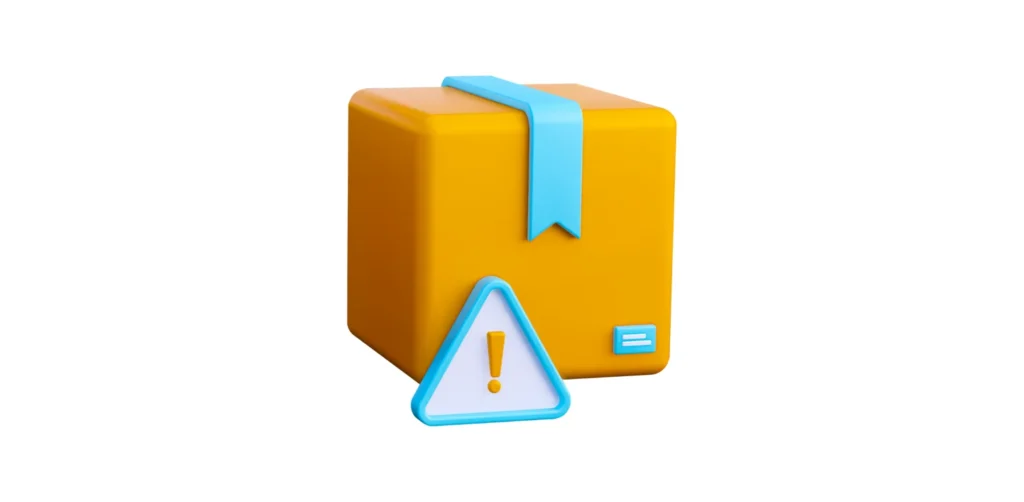These notifications give you an optimal overview of any problems encountered during the order process, making it easier for you, as an e-tailer, to be proactive in managing logistics, customer relations and e-commerce.
What are the advantages for e-businesses of choosing the internal alerts option for each of their businesses?
Internal alerts enable us to identify and process as quickly as possible all orders with logistical problems (untracked, damage), customer relations problems (late deliveries, address problems) or e-commerce problems (returned parcels).
Situations such as delays and returns often affect several professions, including logistics and transport, customer relations and e-commerce.
One of the biggest concerns for e-tailers is WISMO (Where Is My Order) calls. These represent a real obstacle to customer satisfaction and engagement. There are a number of ways to reduce customer contact rates by dealing with WISMOs, and among these solutions, internal alerts are highly effective. In fact, internal alerts make it possible to :
- Monitor your logistics key performance indicators (KPIs)
- Be proactive on orders in difficulty with real-time follow-up
- Focus on orders requiring your analysis or action
You have access to complete, reliable, real-time information on the processing of each order.
How does the internal alert system on the WelcomeTrack platform work?
The internal alert is a configurable notification within a post-purchase platform that e-tailers can use toautomate the detection of anomalies linked to order delivery.
The aim of these internal notifications is to improve your monitoring by setting your alerts according to your objectives. You’ll then be able to monitor your operations in real time from a customizable dashboard, thanks to widgets focused on statistics, operations and control.
Once programmed, the internal alert notifies you of the nature of the delivery problem and the information you need to deal with it. This device also enables you to trigger appropriate communications to your customers to reassure them.

5 internal alerts to follow for each of your businesses
Internal alerts for logistics and transport professions
Some common situations: orders overdue for preparation, parcels gone astray, parcels that haven’t moved in X days, parcels returned to the carrier.
These situations are already pre-parameterized in the platform and can be fine-tuned to suit your business.
1 – Untraced parcels (deviated)
This alert identifies parcels that have been electronically dispatched by the e-tailer, but not scanned by the carrier. Packages may have been left on the shipping dock or lost in the carrier’s network. This alert is necessary to launch a search with the carrier.
2 – Parcel not moved for X days
While tracking the various delivery stages, it can be very effective to be alerted to orders that have had no activity during a given period. This allows you to identify a backlog of orders (lost, stuck in customs, etc.).
Internal alerts for customer relations
Some common situations: late deliveries, returned parcels (damage, carrier, customer refusal, etc.), late appointments, parcels awaiting collection.
These situations are already pre-configured in the platform and can be fine-tuned to suit your business.
You’ll have all the information you need to keep your customers informed and anticipate delays, returns and refunds.
This will take the pressure off your customer service department by proactively communicating to promote customer satisfaction.
Depending on the situations identified, you can send notifications automatically or manually. The aim is tosend notifications to your customers before they feel the need to contact you.
3 – Parcel with an address problem
This alert identifies parcels that the carrier has been unable to deliver due to an address problem. It is generally necessary to correct or complete the address in order to restart delivery. If the parcel has already been returned, the e-merchant can immediately re-launch a second order with the updated address.
4 – Parcels awaiting collection
These parcels are available at a collection point for the customer, where they remain for around ten days (depending on the carrier). It is therefore very useful for the e-retailer to be alerted to these pending parcels, so that he can contact customers to inform them that their parcels are available at the collection point for a limited time.
Once this deadline has passed, the parcel is returned to the e-retailer, which also generates returns costs for the latter, and potentially leads to customer dissatisfaction.
Internal alerts for e-commerce
Some common situations: late deliveries, returned packages, packages awaiting collection. These situations are already pre-set in the platform, and can be fine-tuned to suit your business.
5 – Returned parcels
Depending on the e-retailer’s return policy, customers can return their order in the event of a change of mind or size problem, for example. It is therefore very useful for the e-retailer to be able to identify returned parcels, so he can anticipate accounting actions such as an exchange or refund; and the workload on the warehouse side for receiving the returned parcel and/or creating an order in the case of an exchange.
Thanks to automatic tracking of your e-commerce returns, you can optimize your early refund policy for a better post-purchase customer experience. Fast refunds strengthen your customer relations and your brand image.
The solution for all your businesses
Active monitoring of all your post-purchase activities is essential to ensure your proactivity. Setting up your internal alerts on a post-purchase solution will enable you to reduce WISMO (Where Is My Order) calls and order mismanagement throughout the post-purchase process.
Knowing how to anticipate and deal with order-related issues also means knowing how to reassure customers at every stage of their journey, with messages indicating the status of their order even before they contact you.
WelcomeTrack offers a solution for managing, analyzing and controlling operations, shipping and order fulfillment. These elements ensure better communication with customers, contributing to their commitment and loyalty.
